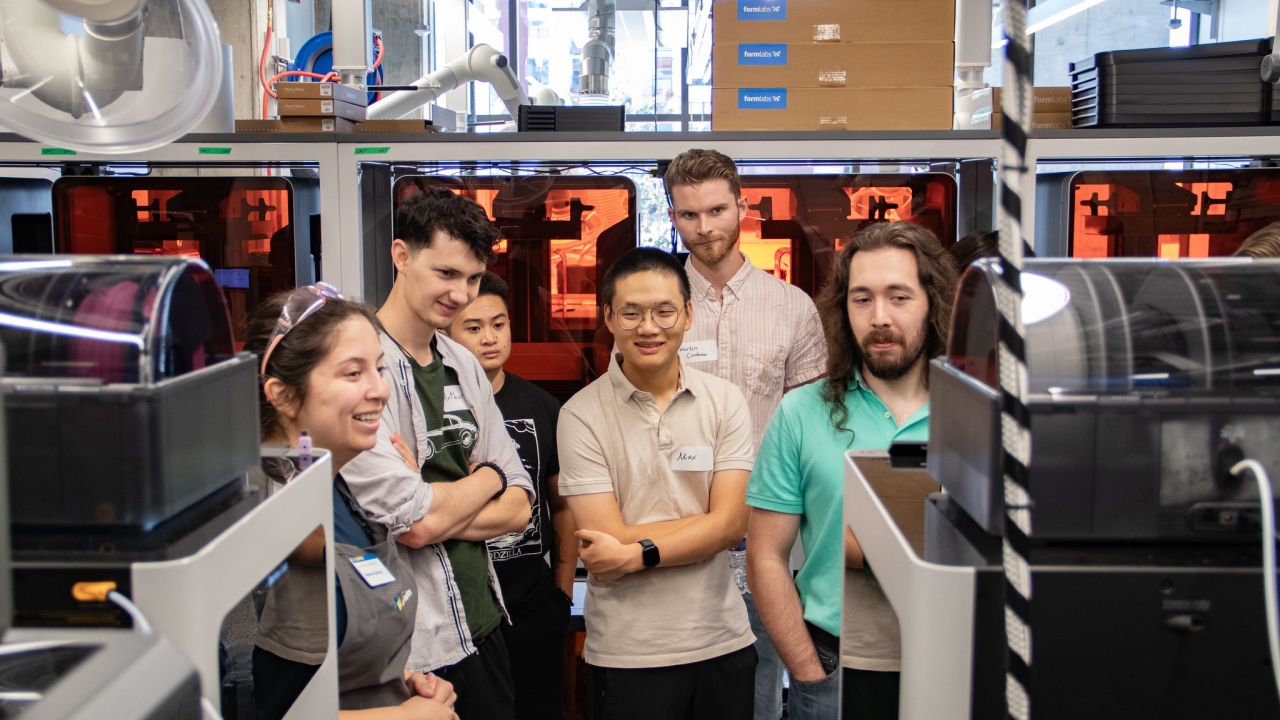Science in Action: How to Build a Corsi-Rosenthal Box
Learn how to build a Corsi-Rosenthal box. The device was created to provide significant reduction in the amount of virus-laden, aerosol particles that are in the air. Follow along as Dean of Engineering Richard L. Corsi, co-inventor, shows you the major components of this device, and how to build one.

Corsi-Rosenthal Box User Guide
This air cleaner is a homemade system useful for lowering levels of respiratory aerosol particles that contain the virus that causes COVID-19 and particles in the air such as dust or wildfire smoke from indoor air. View and print this guide.
Materials Needed
- 4 two-inch MERV 13 filters
- 20-inch box fan Box fan packaging or similar cardboard
- Duct tape (lots of duct tape!)
- Scissors
Step 1: Gather your Ingredients
The first thing you have to do as you start to build a Corsi-Rosenthal box is to have all the right ingredients. There aren't a lot of elements to building the box. You need four MERV 13 filters. In this particular case, I'm going to be using two-inch filters. And as we start to build the box, keep in mind that filters always have this arrow pointing in the direction that you want the flow going.
We have a box fan. We have the box that the box fan came in. This is going to be important because we need some cardboard to put on the bottom of the Corsi-Rosenthal boxes.
And then of course you need duct tape. We're going to use a lot of duct tape to just seal up all the edges around the fans to make sure that all the air that goes into the Corsi-Rosenthal box goes through the filter media itself and not around the edges where particles would not be effectively filtered.
Step 2: Build the Shell
The first thing we're going to do is build the shell of the Corsi-Rosenthal box. We're going to connect all four of the filters together. It's very important when you build the shell of the box that we build it so that the flow is always going in the direction of these arrows.
We want to connect the filters in the vertical orientation. You can see the first filter here, the airflow arrow pointing in.
I'm going to take a second filter with the airflow, arrow pointing in, and I'm going to connect it to this filter right here. When you start this, you want to make sure that they're abutted as well as possible. We're going to seal this up really well after we get all four of the filters put together. Now have the shell of the Corsi-Rosenthal box. We've got all the arrows pointing inwards on the filters. We have good symmetry and we have all the pleats vertical on the filter design.
The next thing we want to do is go to every single one of these seals or seams along the filters. I'm going to seal all of the edges.
We don't want air going through these, any gaps in these, we want all the air going through the filter media. So, I'm going to take this duct tape and I'm going to just put it right up there like that. And I'm going to come all the way down here and seal that seam. I want to do that with every single seam.
You feel the structure now. It's pretty good. It's not moving. It's not flexing at all. I've got good seals on those initial seams.
Step 3: Put in the Floor
And now the next step in building the Corsi-Rosenthal box is to put a floor on it. Again, what I'm going to do is I'm going to take a box that the fan comes in and I'm going to use the cardboard from the box to build the floor of the Corsi-Rosenthal box. I want to make sure that when I sit the Corsi-Rosenthal box shell over the box, I'm covering most of the bottom. The best thing to do is just to simply turn this over now, and I'm going to do the same thing with the floor of the Corsi-Rosenthal box that I did with all the filters when I connected them.
You now have five sides of the Corsi-Rosenthal box. It’s structurally very sound. I'm putting pressure here in all directions. I'm not seeing any flexing of the box. Duct tape is amazing.
Step 4: Install the Box Fan
Now we move on to the final side of the Corsi-Rosenthal box that involves the box fan itself. We want the air to be blowing out, which means that we're going to replace all that air that we're blowing upward with air flowing into the filters.
We want to make sure that when we get this box fan on top, we seal it nicely around all of the edges. And that's probably the part of building it that takes the most time.
You have to be a little bit careful here. Depending upon which fan you use, you may get this kind of thing happening, where you have a little gap right here between the top of the filters and the box fan. We want to make sure that [gap] goes away. We want to seal that up. What I'll do is just take little pieces of cardboard like this and put them in the corners here, seal them up nicely in the corners and make sure that that gap doesn't exist. And I'll just take a little bit of duct tape. And do that for each of these corners.
When we put the box fan on, we slightly elevated the box fan. So make sure that it is very nicely centered so that I don't have any part of the box fan to hanging over the box, hanging over the filters. The next step is we're going to go ahead and seal the seams all around the box fan and the filters.
The last part of this involves the corners of the box fan itself. The blades on the box fan leave a gap in each of these corners. We want all the flow coming out, but in the corners, you can actually have air flowing back in, in this direction, which reduces your total flow rate through the filters. What we can do to overcome that is just put a small shroud or cover on each of these corners.
And so that's my last step here is I'm going to use some of that cardboard from the box fan that I cut up.
Step 5: Admire your New Corsi-Rosenthal Box
This device with the right fan can deliver 600 to 800 cubic feet per minute. And the cost of all the materials for doing this is on the order of about $65. So about one-quarter of the cost of a really good HEPA air cleaner to build a Corsi-Rosenthal box, which is more effective than that much more expensive air cleaner.
And that's the beauty of this device—you get to build it yourself. You get to see science in action, but it also is incredibly effective for lowering the levels of virus-laden aerosol particles in classroom air, in an office suite air, in the air in your home or apartment.




